Lingjing: a key archaic hominin site from Henan China
Lingjing (34° 04′ 08.6″ N, 113° 40′ 47.5″ E, elev. 117 m) is an open-air site located about 120 km south of the Yellow River in northeast Xuchang County, Henan Province, northern China (Figure 1). This water-lain deposit with a still active water spring was discovered in 1965 when microblades, microcores (Zhou, 1974; Chen, 1983), and faunal remains were found on the surface (Li et al., 2017b). From 2005 to 2018, excavations of a 551m2 area allowed the identification of eleven geological layers, numbered from 1 at the top to 11 at the bottom, within a 9m deep sedimentary sequence (Figure 2). The top of the sequence includes layers 1-4, Holocene in age, which yielded material culture spanning from the Shang-Zhou Dynasties to the Neolithic. Layer 5 spans from the Younger Dryas to the LGM and contains microblade technology, microcores, bone artefacts, perforated ostrich eggshells, ochre, faunal remains, and the first evidence of pottery appearing in the region (Li and Ma, 2016; Li et al., 2017a; Z. Li et al., 2018). Layers 6 to 9 are sterile. Layers 10 and 11 were deposited during the early Late Pleistocene. Both yielded lithic artefacts and faunal remains (H. Li et al., 2018). Two incomplete human skulls were found in layer 11 (Figure 3). They bear a mosaic of morphological features interpreted as indicating both regional continuity and interregional population dynamics (Wu et al., 2014; Trinkaus and Wu, 2017; Li et al., 2017b). It was suggested these human remains, alongside those found at Xujiayao, Hebei, could potentially attributed to the Denisovan taxon (Martinón-Torres et al., 2017), although genetic and proteomic data is still needed to test this hypothesis.
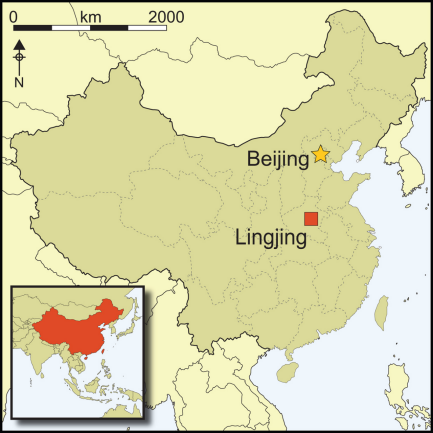
Figure 1. Map showing the location of the Lingjing site (Li Z. et al., 2019).
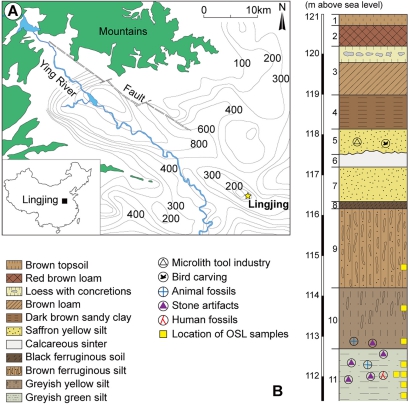
Figure 2. Stratigraphy of the Lingjing site (Doyon et al., 2018).
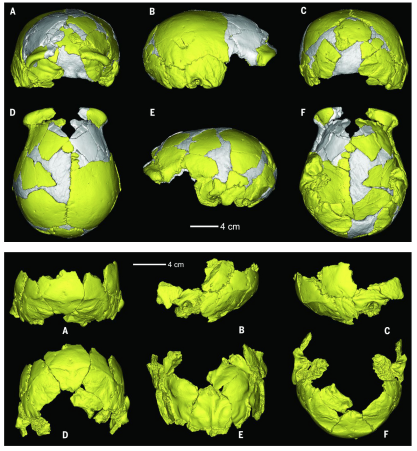
Figure 3. Two incomplete skulls found at the Lingjing site (Li Z. et al., 2017).
The faunal assemblage from the early Late Pleistocene layers mainly includes Equus przewalskii, Equus hemionus, and Bos primigenius remains. The faunal spectrum is complemented with skeletal elements of Canis cf. lupus, Vulpes sp. Ursus sp., Meles sp. Panthera cf., tigris, Pachycrocuta cf. sinensis, Palaeoloxodon sp., Coelodonta antiquitatis, Dicerorhinus mercki, Sus lydekkeri, Hydropotes pleistocenica, Cervus (Sika) sp., Cervus (E.) elaphus, Elaphurus davidianus, Sinomegaceros ordosianus, and Procapra przewalskii
(Li and Dong, 2007; Dong and Li, 2009; van Kolfschoten et al., in press). Despite the presence of hyena remains and coprolites at the site (Li and Dong, 2007; Wang et al., 2014, 2015), this species likely played a limited role in the accumulation of the faunal assemblage (Zhang et al., 2011a). The skeletal element profile of equids and bovids dominated by limb bones (>60%), the high frequency of cut-marks (~34%), and their location on bone midshafts indicate Lingjing layer 11 was a kill-butchery site (Zhang et al., 2009, 2011a, 2011b, 2012). The grassland-dominated vegetation with a mosaic of scattered and mixed forests (Li and Dong, 2007; Wang et al., 2014) combined with the presence of an active water spring surely attracted both humans and animals at Lingjing throughout the early Late Pleistocene, as attested by the uninterrupted vertical distribution of faunal and lithic remains in layers 10 and 11 (H. Li et al., 2018).
Optically Stimulated Luminescence (OSL) ages indicate the deposition of layer 10 and 11 occurred between 96-125 ka (Nian et al., 2009), which spans most of MIS5 (MIS5e to MIS5b). The Lingjing hominins mainly exploited local lithic raw material such as quartz and quartzite. Sandstone, basalt, and chert are also represented in marginal proportions (H. Li et al., 2018, 2019). The lithic assemblage includes hard hammers, some of which were recycled into cores (Figure 4), a variety of cores (i.e., multifacial, discoidal, single platform, etc.), flakes, formal tools (i.e., scrapers, notches, denticulates, borers, points, choppers, etc.), and debris (Figure 5; H. Li et al., 2019). With regard to the shaping and re-sharpening of stone implements, retouch by hard hammer percussion dominates the assemblage (74.2%). However, the use organic soft hammer percussion (8.5%) and pressure flaking (12.0%) have also been documented (H. Li et al., 2019). The use of organic soft hammer percussion and pressure flaking was confirmed by the taphonomic and technological analysis of the faunal remains which allowed the discovery of the oldest bone tools from East Asia (Figure 6; Doyon et al., 2018) and the earliest evidence for organic pressure flakers in the world (Doyon et al., 2019). Together with the identification of use wear on some lithic artefacts (Li, 2007), this evidence suggests knapping activities, and tool manufacture, use, and repair occurred at the site. The use of bone for knapping activities related to carcass processing has also been documented. Indeed, a number of herbivore metapodials bears impact scars and fractures interpreted as resulting from their use as bone hammer in marrow extraction activities (van Kolfschoten et al., in press), a behaviour that is also observed at Schöningen 13II-4 (van Kolfschoten et al., 2015; Hutson et al., 2018). Finally, layer 11 also yielded two engravings on weathered rib fragments (Figure 7), one of which was covered with ocher (Z. Li et al., 2019). This discovery represents the oldest use of bone and ochre for symbolic purpose in East Asia.
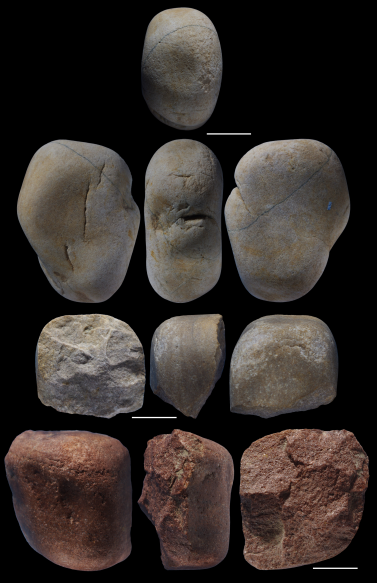
Figure 4. Selection of hard hammer used in knapping activities (Doyon et al., 2019).
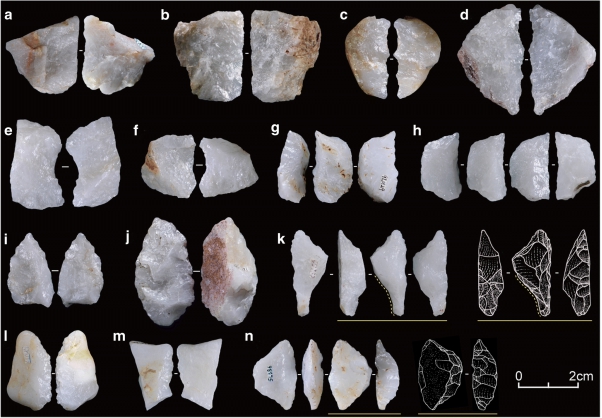
Figure 5. Selection of stone tools from the Lingjing site (Li H. et al., 2019).
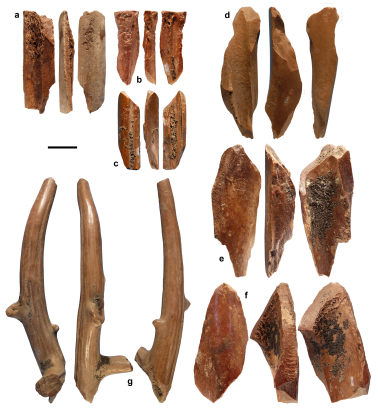
Figure 6. Selection of bone retouchers and organic soft hammer from the Lingjing site (Doyon et al., 2019).
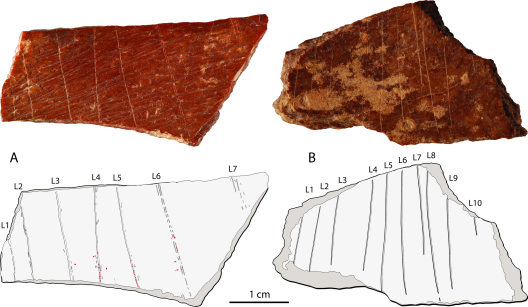
Figure 7. Two engravings made on weathered bone from the Lingjing site (Li Z. et al., 2019).
References
Chen, C., 1983. Preliminary exploration of the typology and technology of microcore in China - also of the culture relationship between Northeast Aria and Northwestern North America. Acta Anthropol. Sin. 2, 331–346.
Dong, W., Li, Z., 2009. New Cervids (Artiodactyla, Mammalia) from the Late Pleistocene of Lingjing Site in Henan Province, China. Acta Anthropol. Sin. 28, 319–326.
Doyon, L., Li, H., Li, Z., Wang, H., Zhao, Q., 2019. Further Evidence of Organic Soft Hammer Percussion and Pressure Retouch from Lingjing (Xuchang, Henan, China). Lithic Technol. 44, 100–117.
Doyon, L., Li, Z., Li, H., d’Errico, F., 2018. Discovery of circa 115,000-year-old bone retouchers at Lingjing, Henan, China. PLOS ONE 13, e0194318.
Hutson, J.M., Villaluenga, A., García-Moreno, A., Turner, E., Gaudzinski-Windheuser, S., 2018. On the use of metapodials as tools at Schöningen 13II-4, in: Hutson, J.M., García-Moreno, A., Noack, E.S., Turner, E., Villaluenga, A., Gaudzinski-Windheuser, S. (Eds.), The Origins of Bone Tool Technologies. Römisch Germanisches ZentralMuseum, Mainz, pp. 53–91.
Li, H., Li, Z., Gao, X., Kuman, K., Sumner, A., 2019. Technological behavior of the early Late Pleistocene archaic humans at Lingjing (Xuchang, China). Archaeol. Anthropol. Sci.
Li, H., Li, Z., Lotter, M.G., Kuman, K., 2018. Formation processes at the early Late Pleistocene archaic human site of Lingjing, China. J. Archaeol. Sci. 96, 73–84.
Li, Z., 2007. A Primary Study on the Stone Artifacts of Lingjing Site Excavated in 2005. Acta Anthropol. Sin. 26, 138–154.
Li, Z., Dong, W., 2007. Mammalian Fauna from the Lingjing Paleolithic Site in Xuchang, Henan Province. Acta Anthropol. Sin. 26, 345–360.
Li, Z., Doyon, L., Li, H., Wang, Q., Zhang, Z., Zhao, Q., d’Errico, F., 2019. Engraved bones from the archaic hominin site of Lingjing, Henan Province. Antiquity 93, 886–900.
Li, Z., Kunikita, D., Kato, S., 2017a. Early pottery from the Lingjing site and the emergence of pottery in northern China. Quat. Int., Emergence of the world’s oldest pottery 441, 49–61.
Li, Z., Ma, H., 2016. Techno-typological analysis of the microlithic assemblage at the Xuchang Man site, Lingjing, central China. Quat. Int., Peking Man and related studies 400, 120–129.
Li, Z., Wu, X., Zhou, L., Liu, W., Gao, X., Nian, X., Trinkaus, E., 2017b. Late Pleistocene archaic human crania from Xuchang, China. Science 355, 969–972.
Li, Z., Xing, Y., Mu, J., Wu, X., Li, Y., Kato, S., 2018. Report of the excavation of microlithic implements on the 5th layer of Lingjing, Xuchang Man site from 2008 to 2013. Huaxia Kaogu Huaxia Archaeol. 2018, 3–33.
Martinón-Torres, M., Wu, X., Bermúdez de Castro, J.M., Xing, S., Liu, W., 2017. Homo sapiens in the Eastern Asian Late Pleistocene. Curr. Anthropol. 58, S434–S448.
Nian, X.M., Zhou, L.P., Qin, J.T., 2009. Comparisons of equivalent dose values obtained with different protocols using a lacustrine sediment sample from Xuchang, China. Radiat. Meas., Proceedings of the 12th International Conference on Luminescence and Electron Spin Resonance Dating (LED 2008) 44, 512–516.
Trinkaus, E., Wu, X.-J., 2017. External auditory exostoses in the Xuchang and Xujiayao human remains: Patterns and implications among eastern Eurasian Middle and Late Pleistocene crania. PLOS ONE 12, e0189390.
van Kolfschoten, T., Parfitt, S. A., Serangeli, J., Bello, S. M., 2015: Lower Paleolithic bone tools from the "Spear Horizon" at Schöningen (Germany). J. Hum. Evol. 89, 226-263.
van Kolfschoten, T., Li, Z., Wang, H., Doyon, L., in press. The Middle Palaeolithic site of Lingjing (Xuchang, Henan, China): Preliminary new results. Ann. Leidensia Prehistorica.
Wang, W., Li, Z., Song, G., Wu, Y., 2015. A Study of Possible Hyaena Coprolites from the Lingjing Site, Central China. Acta Anthropol. Sin. 34, 117–125.
Wang, W., Wu, Y., Song, G., Zhao, K., Li, Z., 2014. Pollen and fungi spore analysis on Hyaenid coprolite from the Xuchang Man Site, Central China. Chin. Sci. Bull. 58, 51–56.
Wu, X., Crevecoeur, I., Liu, W., Xing, S., Trinkaus, E., 2014. Temporal labyrinths of eastern Eurasian Pleistocene humans. Proc. Natl. Acad. Sci. U. S. A. 111, 10509–10513.
Zhang, S., Gao, X., Zhang, Y., Li, Z., 2011a. Taphonomic analysis of the Lingjing fauna and the first report of a Middle Paleolithic kill-butchery site in North China. Chin. Sci. Bull. 56, 3213–3219.
Zhang, S., Li, Z., Zhang, Y., Gao, X., 2012. Skeletal element distributions of the large herbivores from the Lingjing site, Henan Province, China. Sci. China Earth Sci. 55, 246–253.
Zhang, S., Li, Z., Zhang, Y., Gao, X., 2011b. Cultural Modifications on the Animal Bones from the Lingjing Site,Henan Province. Acta Anthropol. Sin. 30, 313–326.
Zhang, S., Li, Z., Zhang, Y., Gao, X., 2009. Mortality profiles of the large herbivores from Lingjing Xuchang Man Site, Henan Province and the early emergenve of the modern human behaviours in East Asia. Chin. Sci. Bull. 54, 3857–3863.
Zhou, G.X., 1974. Stone age remains from Lingjing, Xuchang of Henan province. Kaogu 2, 91–108.